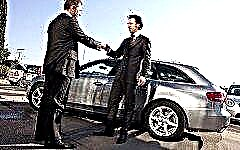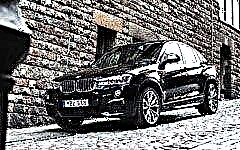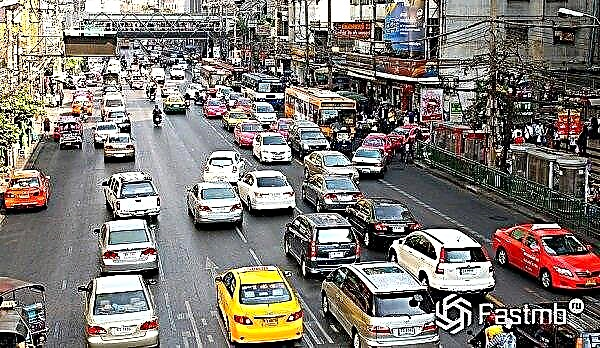
Contents of the review:
- Automotive gymnastics
- Fitting and adjusting the seat
- Cold
- Cardiovascular diseases
- Varicose veins
- Haemorrhoids
In addition to kilometer-long traffic jams, disgusting roads and car maintenance costs, the driver's health is also affected by long-term driving.
Studies show that in just 1 hour driving in busy city traffic, a person gets tired as much as from a whole day working as a loader. The reason lies in the hyperload on the muscle groups of the shoulder girdle, lower leg, wrist, lower back, foot and neck, and added to this is the low-frequency vibration coming from the engine, long immobility, continuous noise from movement and stressful situations.
Taken together, all these psychophysiological factors imperceptibly, imperceptibly, but continuously affect the driver.
Automotive gymnastics

People who are forced to spend many hours behind the wheel should definitely exercise. The emphasis in training should be on relieving stress from those joints that are exposed to greater stress, and at the same time on strengthening the muscles that support them.
The chosen sport should not artificially pump up the visible muscles, but develop those that are hidden deeper and which receive the maximum load while driving. That is, you should give preference not to running or the gym, but to long walks and stretching exercises.
In order not to overstrain during long, many kilometers of travel, a motorist should remember a few simple exercises and perform them at least every 2 hours of travel. They are designed to relieve unnecessary fatigue from the eyes, arms and shoulders:
- In turn, in circular movements, rub first one shoulder for a couple of minutes, then the second, move to the base of the neck, its back and the area near the ears.
- Rub your hands together, as if washing. Thoroughly knead each finger, rotate the hands clockwise and counterclockwise, clench your hands into fists several times. Close the thumb and forefinger into a ring, as for the "ok" gesture, open them with force. Repeat this exercise with all other fingers.
- To train your eyes, you need to look into the distance for a few seconds, then shift your gaze to the hands on the steering wheel, look into the distance again. Repeat at least 10 times.
- Blink vigorously, let your eyes rest, blink again.
- A similar exercise, just close your eyes for a few seconds, open wide.
- With the eyelids down, turn your eyes first in one direction, then in the other. Massage your closed eyes, open them, let them rest, massage again. This exercise is performed exclusively during a rest stop.
Particularly noteworthy is a series of exercises designed to keep the driver from falling asleep while driving. During a monotonous movement on a deserted highway, the driver can disconnect for a couple of seconds, even not noticeably to himself. To prevent a similar situation that could lead to an accident, you need to pull over and warm up:
- Put your hands behind your back, tilt your head back and bend strongly in an arc until the vertebrae crackle, holding this tension for several seconds.
- Put your hand on the back of your head, take your head back, while pressing hard on the back of your head with your palm and creating strong resistance.
- If at the stop there is something that imitates a horizontal bar, you must definitely hang as long as your hands can withstand so that all the vertebrae fall into place.
- Lay something on the ground, wrap your arms around your bent knees and ride on your back like a tumbler. This is the best relaxation of all vertebrae.
If work or lifestyle is associated with constant traveling, regular use of this set of exercises is guaranteed to relieve spine diseases inherent in drivers.
Fitting and adjusting the seat

Almost no driver knows about the correct landing at the wheel of a car, acting according to the principle - "as it is more comfortable". The seat simply adjusts to a comfortable position without considering the medical consequences of improper adjustment.
The most common mistake, especially for young drivers, is reclining the seat. It seems comfortable to the motorist, because lying down, the shoulders and neck relax. However, in this case, the entire mass of the load falls on the lower back, which leads to the inevitable occurrence of osteochondrosis.
The seat should be in such a position that when the pedals are fully depressed, the knees are at an angle of approximately 120 degrees. Straightening your legs will mean the chair is pushed too far. And knees at right angles are too close.
The danger of fully extended legs is that this position does not allow feeling the pedal, forcing you to apply more effort. Accordingly, the legs begin to experience fatigue, and in the event of an accident, there is a high risk of broken legs.
If the driver moved the seat too close to the steering wheel, which caused a right angle of the leg bend, he got a pose in which the body is not properly supported, and blood circulation is significantly reduced. Such an uncomfortable position can also lead to serious injury in an accidental collision.
Despite the continuity of movement, the feet must also rest. The pedals must be pressed exclusively with the socks so that the heels rest on the floor at this time. When the left leg is not involved in squeezing the grip, it can and should be stretched and rest. At the same time, it is convenient for her to control the position of the body if, with sudden braking, a person slides forward from the seat by inertia.
The position of the car owner behind the wheel is no less important. As students in school are taught to sit evenly and work at a desk, so the driver must regulate three main points of contact - shoulders, shoulder blades, lower back.
The back and the entire lumbar region must be pressed tightly against the back of the chair, the knees are located slightly above the level of the hips, the chin is parallel to the floor. Thus, a position is achieved in which the body does not experience undue stress on its parts.
If for some reason the driver is unable to adjust his seat to the described criteria, specialist stores offer lumbar cushions and seat pads that create a comfortable environment for the driver.
Cold

Another common problem for drivers is colds. If the car is not equipped with an autostart system, then in cold seasons you have to stay in the frozen interior for a long time. Here you can make the following mistake - too hot a temperature can steam the body, and then any breeze, any exit from the car will cause a cold or a disease of the lower back. The situation is similar in hot weather, when the driver experiences a temperature difference between the street and the air-conditioned interior.
In wet spring-autumn weather, wet feet are especially dangerous. Not only do wet, cold feet lose sensitivity and can provoke an accident on the road, it is also a guaranteed cold disease.
Cardiovascular diseases

Due to lack of physical activity, constant concentration on the road, the occurrence of stressful moments among motorists, arrhythmia, hypertension, heart attacks are widespread.The more active the traffic, the more external irritants - technical breakdown, bad weather, traffic jam, rudeness of drivers, inattention of pedestrians - the more likely the risk of developing cardiovascular disease.
Each driver, regardless of experience and experience, needs to develop his own set of measures to calm down. Someone can relax with meditative music or sounds of nature, someone breathing exercises, someone self-control training.
Psychologists recommend the following actions to relieve irritation:
- with warm hands, run over your face as if you were washing your face;
- with fingertips, dynamically pat the skin of the face and eyelids in the same way as women apply cream;
- in a circular motion massage the temples, forehead, back of the neck;
- thoroughly rub the nail phalanges of the fingers, where there are many nerve endings.
Varicose veins

Signs of the onset of the disease make themselves felt by the heaviness and swelling of the legs, pain and cramps in the calves, clear, long-lasting marks from the elastic of socks. From the forced bending of the driver's legs, the venous arteries are forced to be compressed, leading to the accumulation and stagnation of blood.
To avoid foot problems, do not wear too tight clothes, wear comfortable shoes, and use compression stockings or tights on trips longer than 3 hours, which will increase the rate of blood outflow and prevent swelling.
Haemorrhoids

Long trips are fraught with the appearance of such an unpleasant disease as hemorrhoids. Neither women nor men are immune from him, because they cause him to be inactive and constipated, caused by irregular nutrition and unhealthy food, which he hastily absorbed while driving.
It is possible to prevent illness by taking care of yourself. No matter how far the path is, you need to think about the diet. Either it will be containers with homemade food, taken with you on the road, or full meals in roadside cafes.
Hypothermia should also be avoided, and the driver's seat should be equipped with a heating system. At the first alarm bells, it is necessary to drop the shame and go to the doctor.
On average, there are about two dozen diseases peculiar to motorists. Most often they occur in those drivers who spend more than 3 hours driving a day. If work or lifestyle forces you to travel frequently, you must especially carefully monitor your health, perform all preventive exercises, and give proper rest to all muscle groups in your free time.











